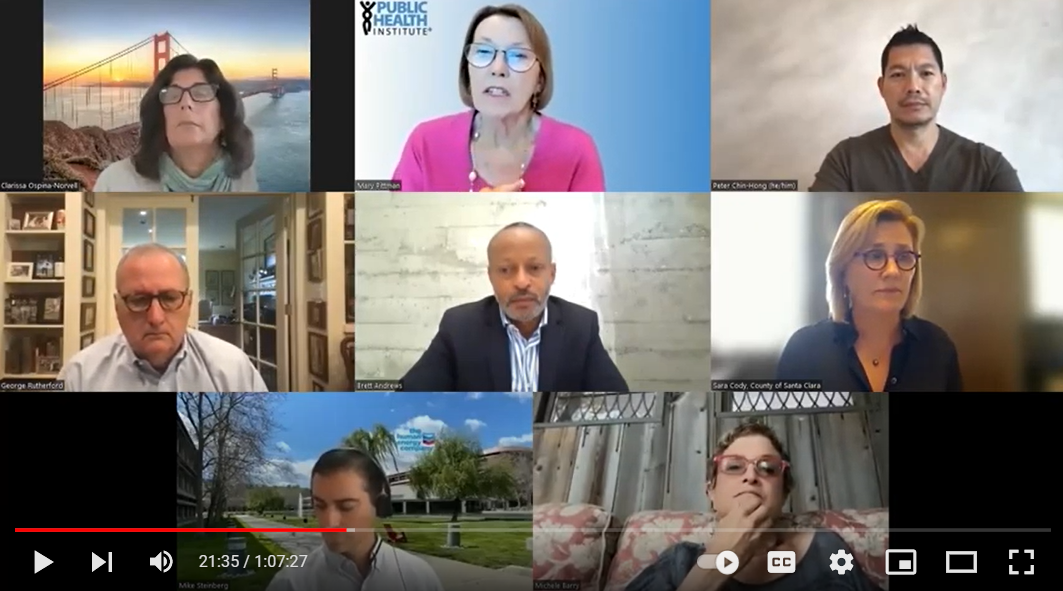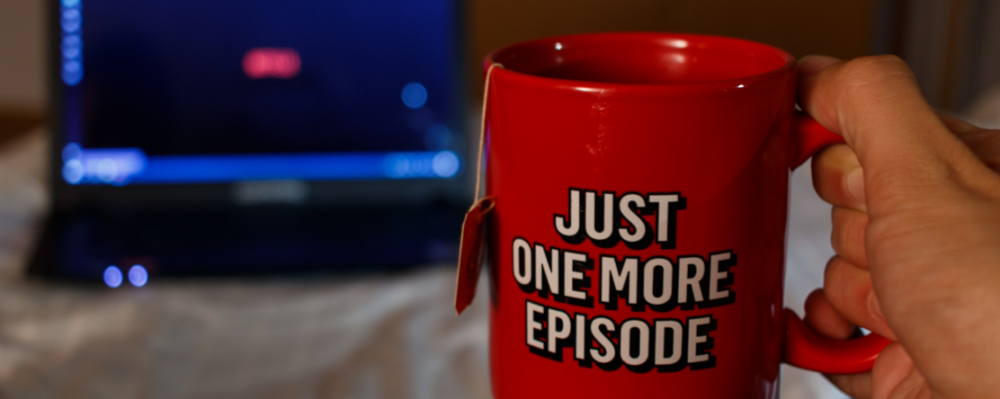
Webinar: Monkeypox in the Bay Area and Beyond
- George Rutherford, Dr. Peter Chin-Hong, Sara Cody, Michele Barry, Brett Andrews, Clarissa Ospina-Norvell, Huma Abbasi, Mike Steinberg
-
Focus Areas
Communicable Disease Prevention -
Strategic Initiatives
Vaccine Access & Equity

Monkeypox is now an international, national, and state public health emergency, made worse by an exhausted health workforce fighting stigma and misinformation, inequities in testing and care and inadequate public health funding. In order to stop the spread, we need strong partnerships—at the community level and with the private sector—especially in building trust. Innovation in surveillance and treatment are also essential.
In August 2022, the Bay Area Global Health Alliance and UCSF Institute for Global Health Sciences hosted a webinar featuring public health experts to discuss the crisis, moderated by PHI President and CEO Dr. Mary A. Pittman.
Webinar Highlights
“There are inequities in treatment, vaccines, communication, and contact tracing,” said Peter Chin-Hong, UCSF Professor of Medicine. “There are lots of challenges in equity, in terms of who is getting tested. To ask for an Mpox test, you have to say essentially ‘I’ve had multiple sex partners, I’m open with my sexuality’, and that may be limiting who is going to get a PCR test.”
“What we are experiencing here at PRC, not only at the community level with our clients, but with many of our staff, is heightened trauma and PTSD. There’s heightened suspicion among and throughout the community, great amounts of fear, often that is because of the lack of knowledge and understanding,” said Brett Andrews, Positive Resource Center (PRC) CEO.
Stigma and a lack of trust are two reasons why community wastewater surveillance is an innovative approach to detect infectious disease and inform response, said Michele Barry, Stanford Center for Innovation in Global Health Director and Alliance board member. “It gives you the ability to evaluate community health with much less bias if people are stigmatized and don’t go in for individual testing. Case identification may be difficult when you don’t see an obvious rash,” said Barry. (Stanford-based initiative WastewaterSCAN monitors wastewater for COVID-19, monkeypox, and other infectious diseases to help guide public health responses.)
Multiple, simultaneous public health crises [monkeypox and COVID-19], coupled with a lack of public health resources, have caused overwhelming challenges, including a “bone tired” public health workforce, commented Sara Cody, Santa Clara County (SCC) Health Officer and Public Health Director.
“Public health budgets have shrunk and public health workforces have shrunk over the last 10 to 15 years,” continued Cody. “While there have been many investments in healthcare delivery, there not only have not been investments in public health, but there have been disinvestments in public health.” She emphasized that flexible and consistent public health funding is essential for building the optimal health system infrastructure.
In caring for the health and safety of a large, international workforce during public health crises, Huma Abbasi, Chevron’s Chief Medical Officer and Alliance board member, noted that key to Chevron’s approach was to address misinformation and stigma through tailoring communications, activating monitoring and surveillance, repurposing materials for efficiency, continually improving established processes, and establishing strong partnerships.
“In our journeys through HIV and COVID-19, we saw that partnerships were important and have always been important,” Huma Abbasi, Chevron’s Chief Medical Officer and Alliance board member explained. “Be proactive in engaging with the key stakeholders and the business partners.”
Clarissa Ospina-Norvell, San Francisco Community Health Center’s Medical Director, agreed that partnerships have been equally valuable on a local level. “We are utilizing peer ambassadors to help educate the community and now collaborating with other service providers, and our immediate community in the Tenderloin, to bring the vaccines to them,” said Ospina-Norvell when speaking about how the San Francisco Community Health Center is addressing monkeypox.
May 2022 marked the first time that many monkeypox cases and clusters have been reported concurrently in non-endemic and endemic countries in widely disparate geographical areas. It is a global health challenge facing the Bay Area and beyond.
Speakers:
-
George Rutherford – UCSF Professor, Epidemiology & Biostatistics; Director, Prevention and Public Health Group; Acting Director, IGHS
-
Dr. Peter Chin-Hong – UCSF Professor of Medicine
-
Sara Cody – Santa Clara County Health Officer and Public Health Director
-
Michele Barry – BAGHA board member; Stanford Professor of Medicine; Director, CIGH of the Center for Innovation in Global Health and Senior Associate Dean for Global Health
-
Brett Andrews – SF’s Positive Resource Center (PRC) CEO
-
Clarissa Ospina-Norvell – SF Community Health Center’s medical director
-
Huma Abbasi – Chevron’s Chief Medical Officer and BAGHA board member
-
Mike Steinberg – Chevron’s Team Lead of Global Public Health and Special Projects
Moderator:
-
Mary Pittman – Public Health Institute’s CEO and BAGHA board chair
Originally published by Bay Area Global Health Alliance
Work With Us
You change the world. We do the rest. Explore fiscal sponsorship at PHI.
Support Us
Together, we can accelerate our response to public health’s most critical issues.
Find Employment
Begin your career at the Public Health Institute.



